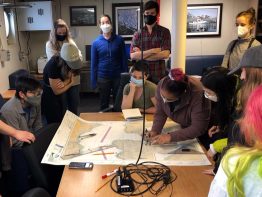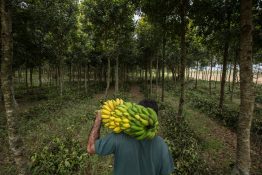If you want to grab and keep people’s attention, utilizing storytelling techniques in your communication — written, verbal or otherwise — can be powerful. Storytelling is a tried-and-true method of sharing information, one that long precedes the scientific paper. Good stories appeal to our humanity, tap into our emotions, create a connection and can keep the listener engaged as they become invested in the outcome.
Read more »How COVID-19 changed research on the high seas
For crew members of the UW research vessel Thomas G. Thompson, the last two years have been a test of preparedness and resilience while conducting research at sea. On top of the usual threats of rough seas and homesickness, seafarers now have to factor in the worldwide coronavirus pandemic, which has had a special knack for spreading rapidly on ships. While the isolated nature of research on the open ocean might have seemed like welcome distance from the rest of humanity during the early days of the pandemic, many will remember how some of the first stories of the virus’ potential came from shipboard outbreaks.
Read more »Planting trees in pastureland provides significant cooling in the tropics
Farmers struggling to adapt to rising temperatures in tropical regions can unleash the benefits of natural cooling, alongside a host of other wins, simply by dotting more trees across their pasturelands. For the first time, a study led by the University of Washington puts tangible numbers to the cooling effects of this practice. Researchers at the UW and The Nature Conservancy, along with Duke University, the University of California San Diego and Stony Brook University Hospital, find that adding trees to pastureland, technically known as silvopasture, can cool local temperatures by up to 2.4 C (4.3 F) for every 10 metric tons of woody material added per hectare (about 4 tons per acre) depending on the density of trees, while also delivering a range of other benefits for humans and wildlife.
Read more at UW News »This tiny coastal fish wears a toothy coat of armor
The ocean is full of otherworldly creatures, seemingly from alien planets with alien capabilities. In most cases, the award for craziest looking critter would go to an invertebrate. But many fish are contenders, too, and there’s an oddly adorable one common in northwest waters. What does it look like? Imagine a golf ball. Now put some googly eyes on it and add a suction cup to its belly.
Read more »




